If you’re moving to a new home, there’s a lot to think about. From packing up all your belongings to dealing with the stress of the move itself, it can be tough to keep everything straight. And if you have a dog, there’s one more thing to add to your list: making sure your furry friend is ready for the move.
In this blog post, we’ll give you some tips on how to make sure your dog is prepared for the big move. From what to consider when looking for a new place, how to get your dog used to their new surroundings, and how to keep keep them calm during the actual move, we’ve got you covered. So read on for everything you need to know about moving with your dog.
Picking the right home for you and your dog
Having a dog comes with many responsibilities, and those responsibilities are easier to meet if you have the right home. While most homes can be adapted to be safer for dogs, it’s much easier to buy a dog-friendly home from the start. When you’re looking at new houses, make sure you keep your dog’s needs in mind as well as your own to save you renovation costs later on.
If you’re moving with your dog, it’s important to find a home that’s the right fit for both of you. Here are some things to keep in mind when house-hunting with your furry friend:
Size and Layout
Make sure the home you’re considering has enough space for your dog to move around comfortably. Even large dogs don’t need a ton of space, as long as they are regularly exercised, but you don’t want to be on top of one-another.
Also consider how the home’s layout will work for your dog. For example, is their easy access to the outside for letting the dog out? Stairs or no direct exterior access can make potty time a hassle. If you have a very small or elderly dog, you may also want to consider whether exterior or interior stairs are an issue altogether or if a ranch layout would be a better fit.
Avoid Busy Streets
When you are searching for a new place, it is helpful to think about the properties from the eyes of your pet. Wide streets or roads with grassy dividers can help you keep your dog away from traffic. Lesser-traveled roads like cul-de-sacs and dead-end streets might are great options as it will be easier to get to the other side of the road without crossing open traffic areas.
You can also look at gated communities where there are fewer cars. Even if you have no intention of letting your dog roam the neighborhood or even sit out alone in the front yard, there will be times when your dog gets out, and you’ll want to be sure he is safe during those incidents.
Talking to your potential neighbors is a great way to get a feel for the dog-friendliness of the community as well!
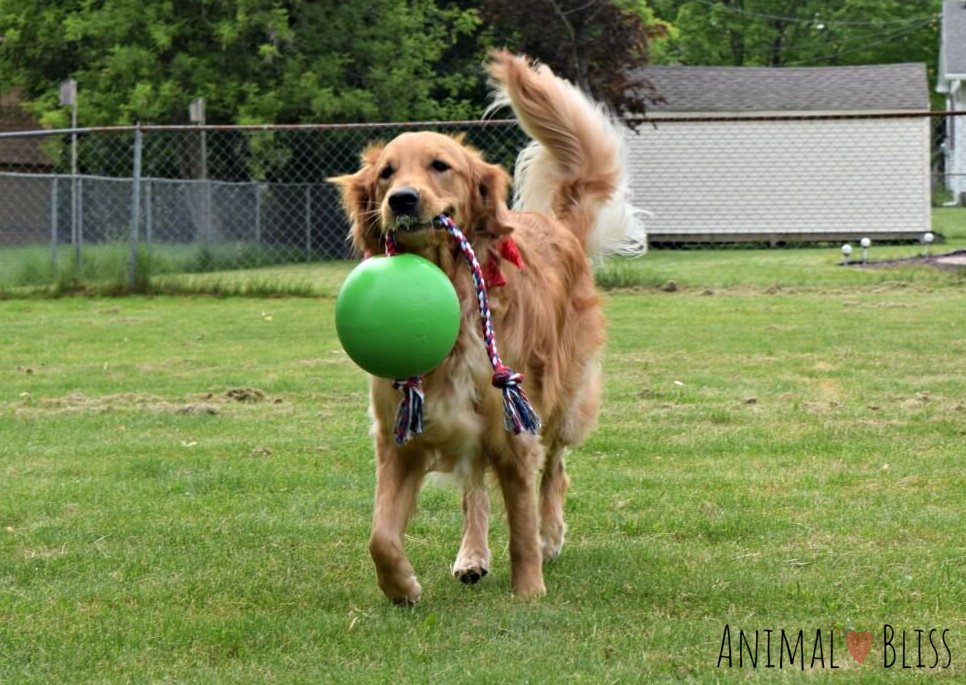
Outdoor space
Your dog will be a lot happier if he has space to run around in, so a big yard is a major plus. Dogs who don’t exercise tend to become overweight and anxious, which is not good for the dog’s emotional or physical health. Even if you’re busy with work and family commitments, your dog will still feel happy in a yard space where they can burn off energy and get ample exercise every day.
If the home you’re looking at doesn’t have a backyard, see if there’s a nearby park or green space where your dog can get some exercise.
Pay Attention to the Foliage
Despite doing your best to keep an eye on your pooch, if you have common poisonous plants on or near your property, like tulips and daffodils, you run the risk of missing your pet munching on the greenery when you are occupied. Like toddlers, dogs tend to explore the world through their mouths, and they don’t always know the difference between toxic and nontoxic plants. Many plants and flowers are dangerous for dogs to ingest, so it’s a good idea to research the plants around a house before you commit. Some safer plants include roses, snapdragons, and sunflowers.
Fences
If you plan to ever leave the dog outside unsupervised, then safety for your pet and the neighborhood is a top priority. Fencing tall enough to keep your dog in the yard is crucial. Researching the range your dog can jump can help you decide the type and height of the fence you need, as well as the material. This is very important to ensure that your dog doesn’t take off into open traffic, run around the neighbor’s yards, or get lost. You are legally responsible for anything your dog does, so even if he is not harmed in a neighborhood adventure, you could be in serious trouble if he so much as relieves himself in the wrong yard.
Proximity to amenities
Think about what else is nearby – are there any dog-friendly restaurants or stores within walking distance? Is there a doggy daycare nearby in case you need someone to watch your pup while you’re at work?
By keeping these factors in mind, you can narrow down your search and find the perfect new home for both you and your furry friend.
Dogs and apartments: making it work
Dogs and apartments can be a tricky combination. First, most landlords or property managers have very specific rules about the size, type and number of pets that they allow on the premises. Second, you will typically be dealing with smaller quarters so need to consider the walkability of the area and if there are any common spaces nearby. Despite these hassles, don’t be discouraged, there are plenty of dog friendly apartments to be found if you are willing to put in the work!
Make sure your apartment is set up in a way that’s comfortable for both you and your dog. Dogs need a designated space of their own where they can eat, sleep, and relax. A crate or bed in a quiet corner of the room is ideal. And don’t forget the toys! Having their favorite things around will help ease your dog’s transition into their new home.
If your apartment complex has a dog park or other designated areas for pets, take advantage of them! Getting your dog socialized early on will help them adjust to their new surroundings and make new friends.
Packing up your home with a dog
Many dogs will get anxious as they see you packing up your current place. Keeping them well-exercised during this time is crucial to help keep these feelings at bay. Extra chew toys can also work wonders to keep them occupied and entertained while their surroundings are changing.
Finally, make sure to stick to their regular routine as much as possible. This means keeping their mealtimes, walks, and playtime the same. Keeping everything you can consistent will help to ease a stressful time for both of you!
Moving day with your dog
On moving day, try to keep your dog’s routine as normal as possible. If possible, take them for a walk in the morning before the craziness of the move starts. This will help burn off any extra energy and keep them calm.
Assuming you’re not moving too far away, the best way to move with your dog is to have them travel with you in the car. This way they can see that you’re still there with them and everything will be okay. If it will be a longer drive, make sure to make a stop along the way so your pup can stretch their legs and relieve themselves.
If you are going to be making several trips throughout the day it might be helpful to have someone familiar stay with your dog at the old house until everything is moved out and they can come over to the new house – this way they’re not left alone in an unfamiliar place during the move. Even better if you can drop them off with a friend or pet-sitter, whose house they feel comfortable in, to spend the day. Make sure their usual things like food and water bowls, toys, beds, etc. are all packed up and ready to go so they feel as comfortable as possible!
Whatever you decide, throughout the day, make sure your dog has plenty of breaks to rest and relax. And at night, give them a good meal and some playtime before bed so they can wind down from the day’s events.
Moving can be stressful for dogs, but with a little preparation and care, it can be a smooth transition for everyone involved.
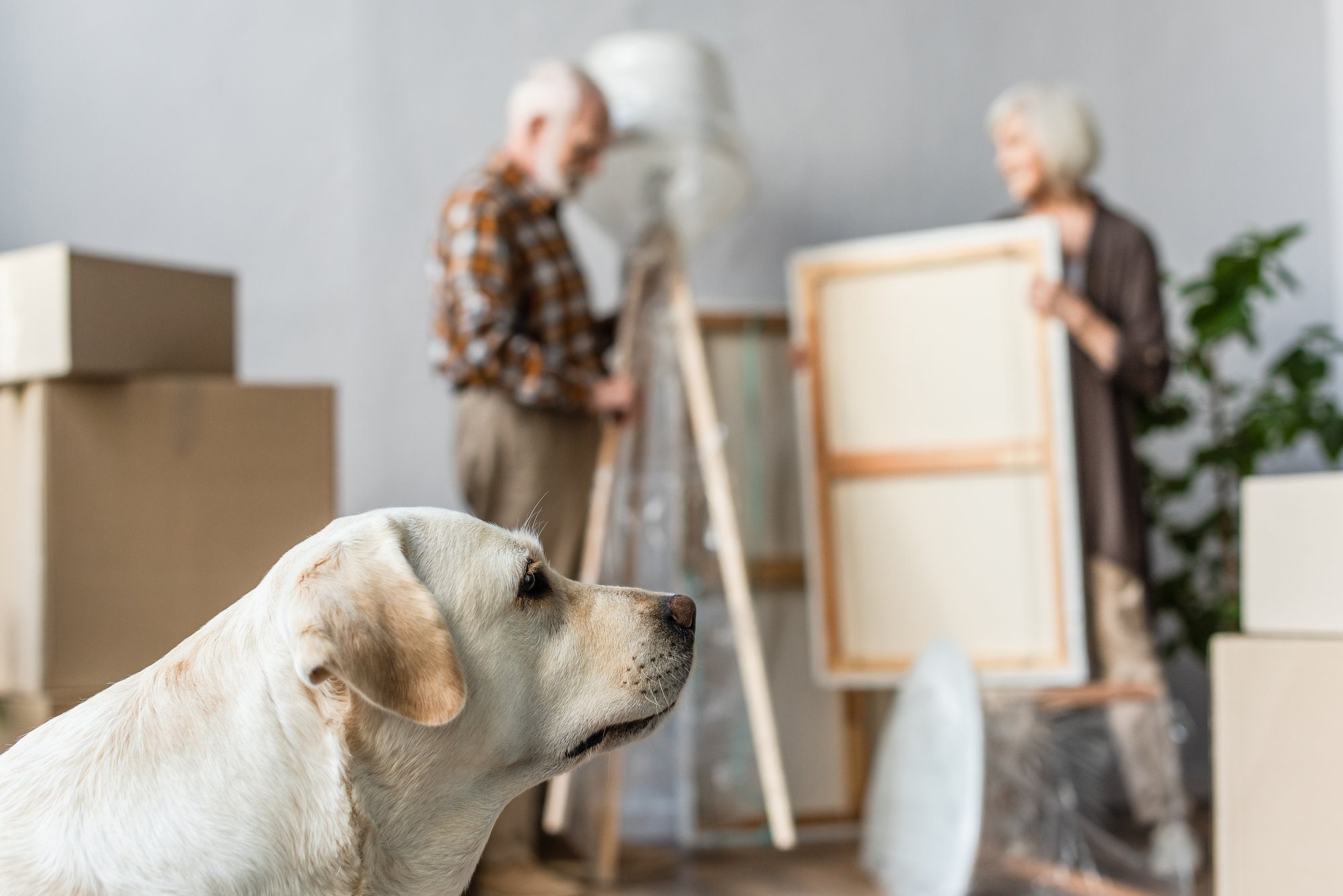
Introducing your dog to their new home
Introducing your dog to their new home doesn’t have to be stressful – in fact, it can be pretty exciting for both of you. Here are a few tips to make sure the transition goes smoothly:
Give them time to explore
Just like humans, dogs need time to adjust to their new surroundings. When you first arrive at your new home, let them explore a bit and get comfortable on their own before asking them to do anything else. It may help to get them acclimated to the new house gradually. Allow them to explore a room or two at a time over the course of a few days so that they have time to get used to their new surroundings.They may be a little hesitant at first, but with some time they’ll learn to love their new digs.
Show them where their things are
One way to help your dog feel at home is to show them where their things are – like their food bowl, water dish, bed, blanket, favorite toys, etc. This will help them feel more comfortable and secure in their new environment.
Make sure they have a safe space
Dogs need a place where they can go to feel safe and relaxed – away from all the noise and activity of moving day. If possible, set up their crate or bed in a quiet room or corner where they can retreat to when they need some peace and quiet.
Establish a routine
Dogs thrive on routine, so keep things as similar as possible during the move – same mealtimes, walks, playtime etc. This will help reduce their stress levels and make the transition smoother for them.
Be patient and understanding
It may take your dog a little while to feel completely comfortable in their new environment. Be patient and understanding during this transition period. With some time and patience, they’ll be happy and settled in no time! Dogs pick up on our emotions, so remember that it’s important for you to stay calm and positive throughout the experience.
Don’t forget the treats!
Positive reinforcement goes a long way in helping your dog adjust to their new life.
Conclusion
Moving with your dog can feel like a daunting task, but it doesn’t have to be. With a little bit of preparation, you and your furry friend can make the transition seamlessly. Keep these tips in mind and you’ll be sure to have a smooth move with your four-legged companion by your side.
- 23 Fun Tricks to Teach Your Dog - November 18, 2022
- 23 Tips for Raising a Kitten - November 13, 2022
- Preparing for a Road Trip with Your Dog - November 9, 2022

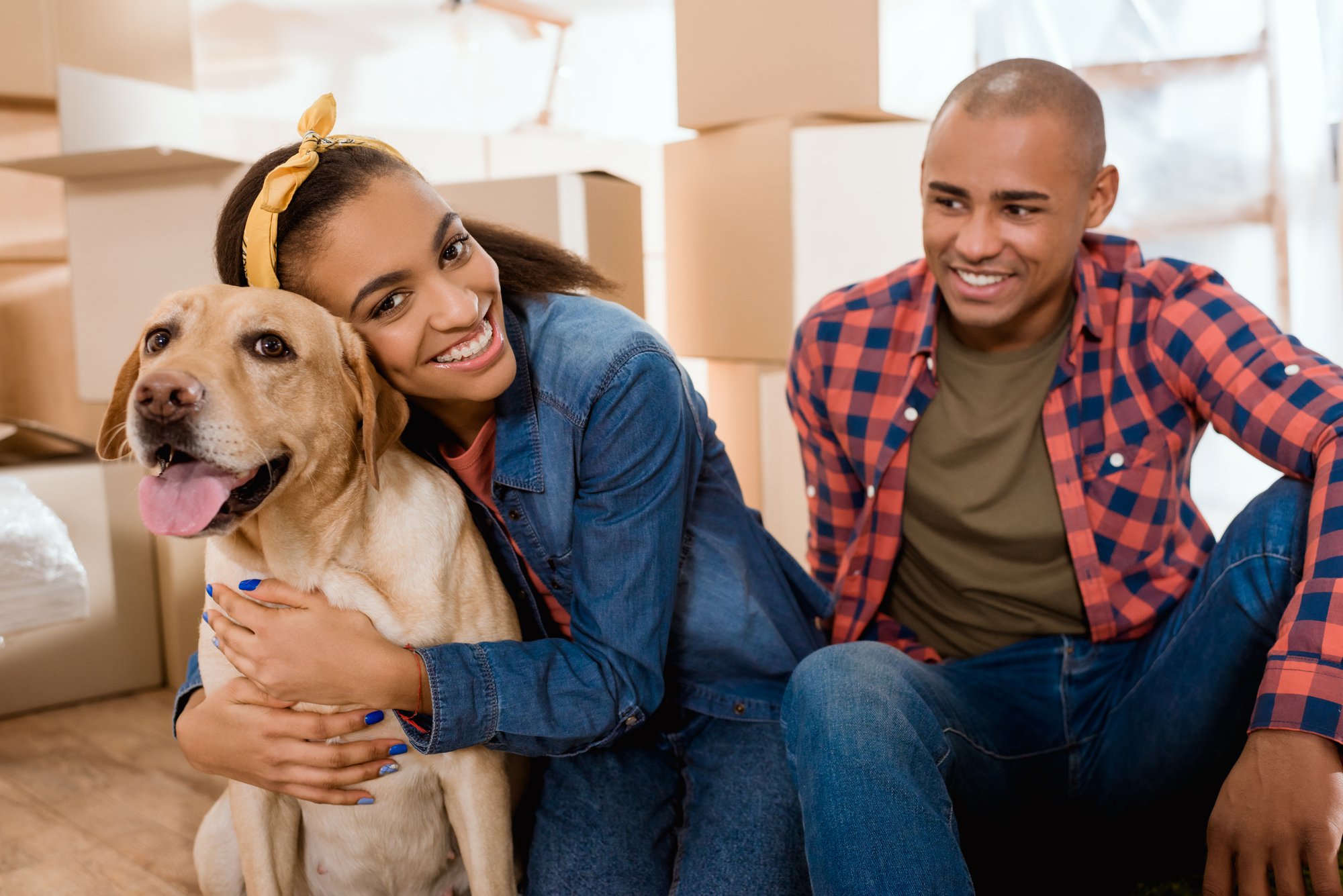
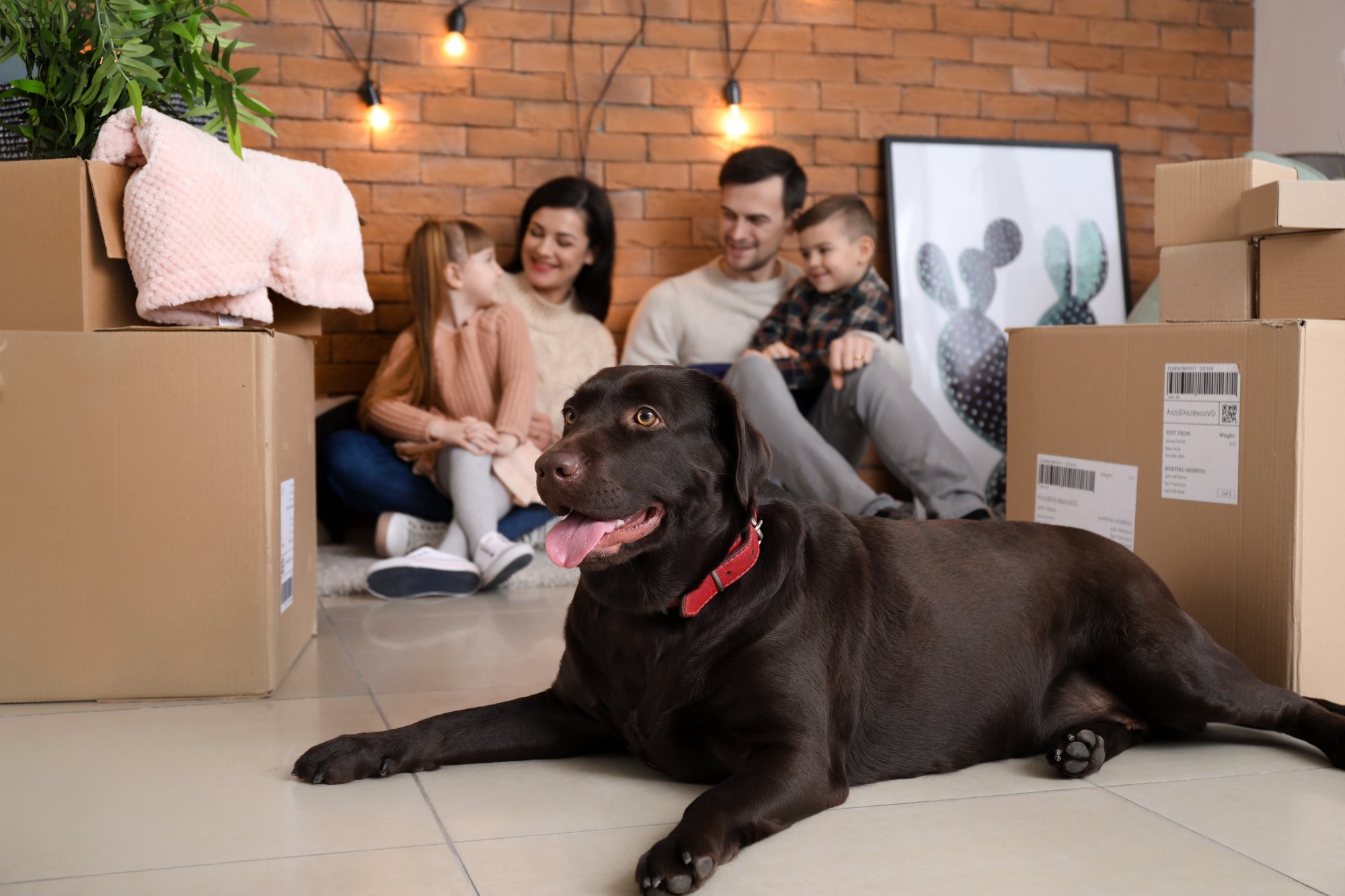
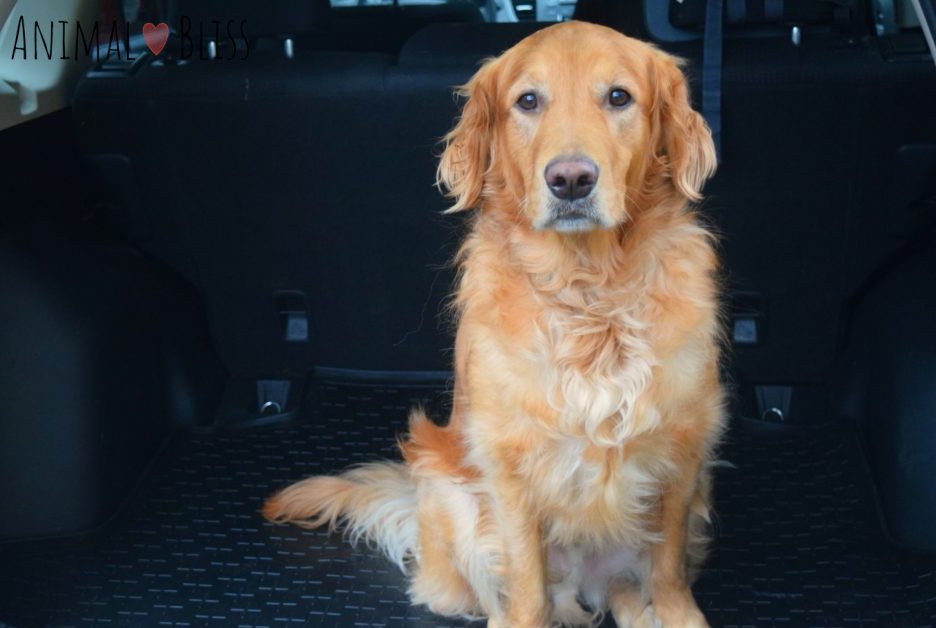
We’re thinking about moving, and I came across this article, which has been extremely helpful. Everything you mentioned was familiar to me. But there was one thing I forgot “On moving day, try to keep your dog’s routine as normal as possible.” which is very important. I believe that an apartment-appropriate pet, such as my girl Milky, is essential for an apartment lifestyle. She is a cross between a German Spitz and a Lassa. We adopted her in our current apartment, and she adjusted quickly 😍